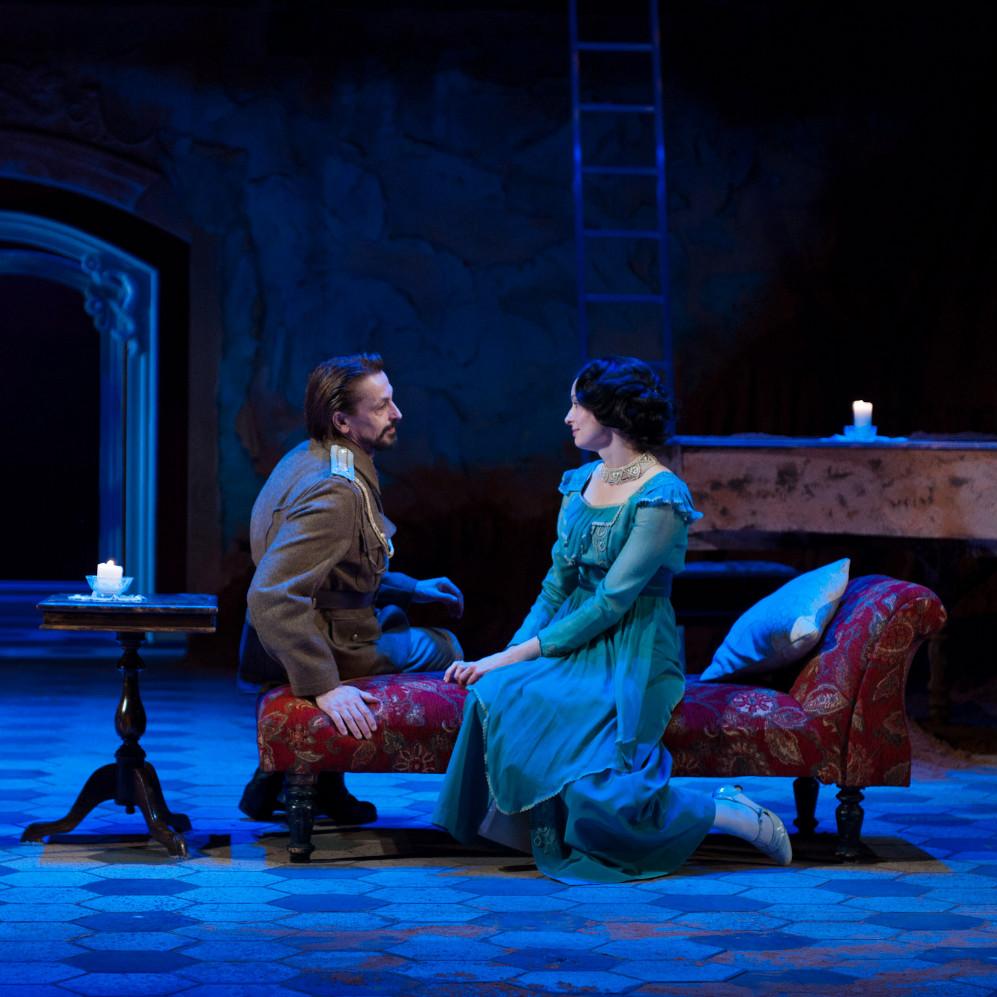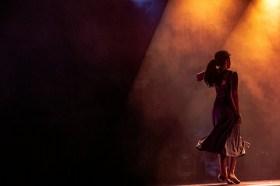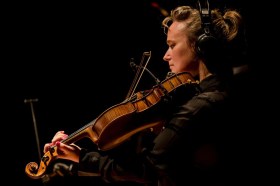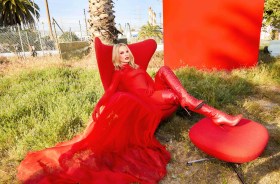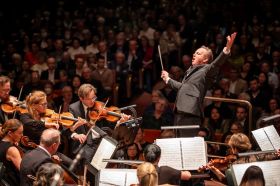Adam Cook’s traditional reading of Three Sisters for the State Theatre Company is fine, but it does little to show the relevance or importance of the text to a modern Adelaide audience; which is interesting considering the position Adelaide – and art in Adelaide – is often finding itself in relationship to Sydney and Melbourne.
Cook’s set, co-designed with Gavan Swift, places the Prozorovs’ dilapidated house at the bottom of an archeological excavation. While the dilapidation of peeling green paint exposing red stone walls is beautiful, and in itself an interesting frame for the unhappy lives of all who pass through, in the end, this only serves to detract from the text. Framing the work in a context that highlights the museum qualities of the piece does precisely that: it highlights the staid approach, the old Russian ideals, and the clipped language of much of the script.
While visually stunning, within the context of this classical reading the set is logically confusing – draped with red dirt of arid deserts, rather than the black soil of cold Russia – and thematically distracting. I expected something to happen or to be said in the ‘modern’ world of the dig, but the archeologists remain silent through their scenes, which are little more than taking to the stage at the top of each act, helping to change sets. These characters further are infused with a fuzzy logic: while at the start of the play they are oblivious to their Russian counterparts, by the end of act four they seem to be standing and filming their existence.
In Three Sisters, Cook has the biggest professional cast seen at the State Theatre Company for many years. With 14 actors, the company had to place the production as the centrepiece of their season, and choose plays (and their corresponding cast sizes) for the rest of the season with this in mind. While this has given Cook a fantastic cast to play with, it has unfortunately relegated lead actors to roles of less than a couple of dozen lines.
While most performances are strong, it is disappointing to see so few cast members reach their potential, and many actors seem to be performing in different productions. Carmel Johnson as the oldest sister Olga is old enough to be the mother of Irina (Kate Cheel) and Marsha (Kesnja Logos). Where Michael Habib as Chebutykin hams it up, Peter O’Brien’s Vershinin can have a tendency to be overly clipped; in the best performance, the subtle tones and despair of Logos was on occasion dominated by Nadia Rossi’s excessively caricaturistic Natasha.
Ailsa Patterson’s costumes are beautifully constructed and create delightful commentary on the characters, particularly on the women. From the straight lines, tailored construction, and fashionable dress for the cynical Marsha, to Irina’s passage from the flouncy dress of a child to the neat and practical wear of an employed woman, Patterson also gave the production a stronger sense of time and place.
Jason Sweeny’s composition is best when it gently underscores the action. Unfortunately, this is let down by aspects of the sound design, which sees a guitar played live on stage, but the piano pre-recorded: from where I sat, music from a piano sitting upstage left was heard through speakers sitting downstage right. The same directional foible was heard when the cries from a pram centre stage were elicited from audience level speakers, jarring against the unamplified voices of the cast.
Even with its framing device, the State Theatre Company production of Three Sisters ultimately feels like a production you could have seen anywhere in the world in the past hundred years. It is, for the most part, a faithful, competent staging of a classic of the Western theatrical canon. But it fails to rise above its known status and become a work that says anything more or has any pertinence to today.
Rating: Two and a half stars
Three Sisters
Written by Anton Chekhov
Directed by Adam Cook
Set Design: Adam Cook and Gavan Swift
Costume Design: Ailsa Paterson
Lighting Design: Gavan Swift
Composer: Jason Sweeney
Performed by Chris Asimos, Kate Cheel, Patrick Graham, Michael Habib, Edwin Hodgeman, Carmel Johnson, Ksenja Logos, Renato Musolino, Peter O’Brien, Nathan O’Keefe, Geoff Revell, Nadia Rossi, Roman Vaculik, Bridget Walters
State Theatre Company of South Australia
August 5 – 28

